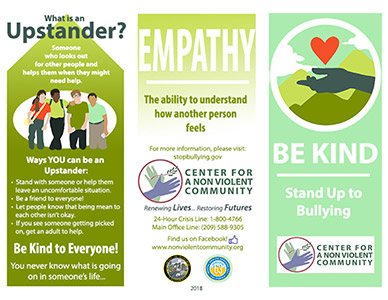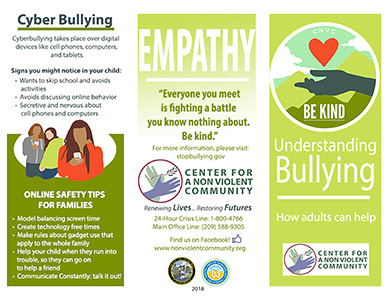Bullying is unwanted, aggressive behavior among school aged children that involves a power imbalance. The behavior is repeated, or has the potential to be repeated, over time. Both kids who are bullied and who bully others may have serious, lasting problems.
In order to be considered bullying, the behavior must be aggressive and include:
- An Imbalance of Power: Kids who bully use their power—such as physical strength, access to embarrassing information, or popularity—to control or harm others. Power imbalances can change over time and in different situations, even if they involve the same people.
- Repetition: Bullying behaviors happen more than once or have the potential to happen more than once.
Bullying includes actions such as making threats, spreading rumors, attacking someone physically or verbally, and excluding someone from a group on purpose.
Types of Bullying
There are three types of bullying:
- Verbal bullying is saying or writing mean things. Behaviors include:
- Teasing
- Name-calling
- Inappropriate sexual comments
- Taunting
- Threatening to cause harm
- Social bullying, sometimes referred to as relational bullying, involves hurting someone’s reputation or relationships. Behaviors include:
- Leaving someone out on purpose
- Telling other children not to be friends with someone
- Spreading rumors about someone
- Embarrassing someone in public
- Physical bullying involves hurting a person’s body or possessions. Behaviors include:
- Hitting/kicking/pinching
- Spitting
- Tripping/pushing
- Taking or breaking someone’s things
- Making mean or rude hand gestures
Cyberbullying takes place over digital devices like cell phones, computers, and tablets. It can occur through DMs, text, and apps, or online in social media, forums, or gaming where people can view, participate in, or share content. Cyberbullying includes sending, posting, or sharing negative, harmful, false, or mean content about someone else. It can include sharing personal or private information about someone else causing embarrassment or humiliation. Some cyberbullying crosses the line into unlawful or criminal behavior.
The most common places where cyberbullying occurs are:
- Social Media, such as Facebook, Instagram, Snapchat, and Twitter
- SMS (Short Message Service) also known as Text Message sent through devices
- Instant Message (via devices, email provider services, apps, and social media messaging features)
For more information:


